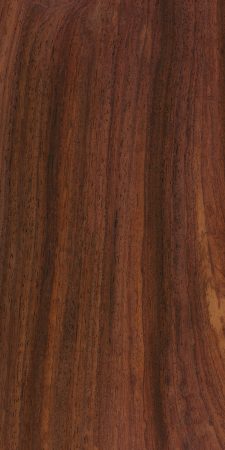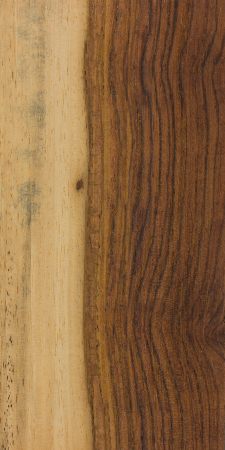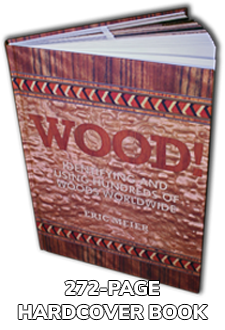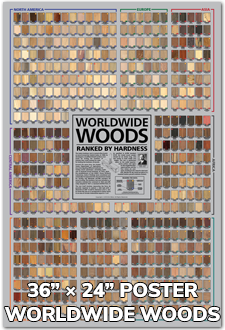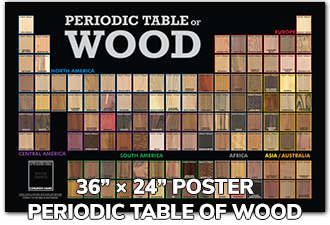by Eric Meier
China uses a lot of rosewood. So much so, in fact, that their increasing usage became the impetus for eventually listing the entire Dalbergia (rosewood) genus on CITES Appendix II back in 2016. But while all of these woods are now protected in international trade as endangered species, not all of China’s most revered woods have received equal protections. This discrepancy lies in the great diversity of precious woods used in China.
Hongmu 红木 — A name synonymous with prestige
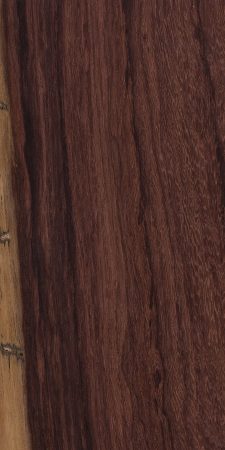
The name hongmu literally means “red wood,” but while the term started out only applying to a single species, the definition has since deepened and broadened over time to eventually cover a total of 28 distinct species over a total of 8 defined categories. Today, the term hongmu no longer applies exclusively to a single species—or even to wood species that are red.
Originally, the name hongmu referred specifically to Siamese rosewood (Dalbergia cochinchinensis)—which makes sense, since this could very fairly be called a “red wood.” This wood is sometimes called 老红木 “old hongmu” or “old red wood” to distinguish it from the other (newer) species of hongmu that have since been adopted into mainstream use.
But even this wood was originally considered a substitute among the lumber species in the highest echelons of Chinese furniture.
If you go far enough back—to the Ming (1368-1644) and Qing (1636-1912) dynasties—you’ll find two more highly-regarded (and exploited) woods that were used in the highest end furniture of the day.
老三样—The three original hongmu species
In addition to the formerly discussed 大红酸枝 Siamese rosewood, there are two woods that can be appropriately seen as the king and queen of Chinese woods. This analogy also helps to underscore the equal-but-different status of these two woods.
As the first wood at the very top of the list, there is 紫檀 (zitan) as the “king.”[1]最后的”老三样”:大红酸枝也已渐行渐远! [The last of the “old three”: Dalbergia cochinchinensis is also gradually moving away!]. (2017, June 9). Haisibot. … Continue reading This wood has a very high density, a deep reddish purple color, and a very fine grain able to take intricate carved details. These characteristics made it an ideal species for the emperor’s wood, and its use dates back to at least the year 1287.[2]Zhang, W. (2023). 红木家具用材的演变与发展趋势 [The evolution and development trend of hongmu furniture materials]. Zhongguo Linye Chanye, 12(4), 25–30.
Sitting beside this wood is the estimable 海南黃花梨 (Hainan huanghuali, or simply just huanghuali) as the “queen.” Hailing from the southernmost Chinese island province of Hainan, huanghuali is a proper and true tropical rosewood species of the Dalbergia genus. While not quite as dense as zitan, huanghuali boasts a golden honey to orangish red heartwood color, along with a host of figured and light-refracting grain patterns. One of the most sought after is the 鬼臉 ghost-face pattern, usually stemming from a knot or area of circular grain, giving it an eerie, humanoid-like appearance—bocote (Cordia elaeagnoides) is another hardwood known better to Western woodworkers that also commonly displays this type of grain as well.
But eventually, this king and queen pair were more or less tapped out, and other similar woods needed to be sought out to fill the void. This is where the original hongmu 红木 “red wood” comes unto play. If hongmu woods were a deck of playing cards, the Siamese rosewood be at the level of a jack.
Expanding the List Outward
In addition to these three original species, there are 25 other officially recognized hongmu species, for a total of 28 species.
Because there was so much confusion and counterfeits, the Chinese government even established an official document outlining the standard hongmu species and the criteria that must be met in order to be considered genuine. That standard first appeared back in 2000 as GB/T 18107, but has since been updated by a newer standard, offically designated GB/T 18107-2017.
References[+]
| ↑1 | 最后的”老三样”:大红酸枝也已渐行渐远! [The last of the “old three”: Dalbergia cochinchinensis is also gradually moving away!]. (2017, June 9). Haisibot. Retrieved August 5, 2025. |
|---|---|
| ↑2 | Zhang, W. (2023). 红木家具用材的演变与发展趋势 [The evolution and development trend of hongmu furniture materials]. Zhongguo Linye Chanye, 12(4), 25–30. |

